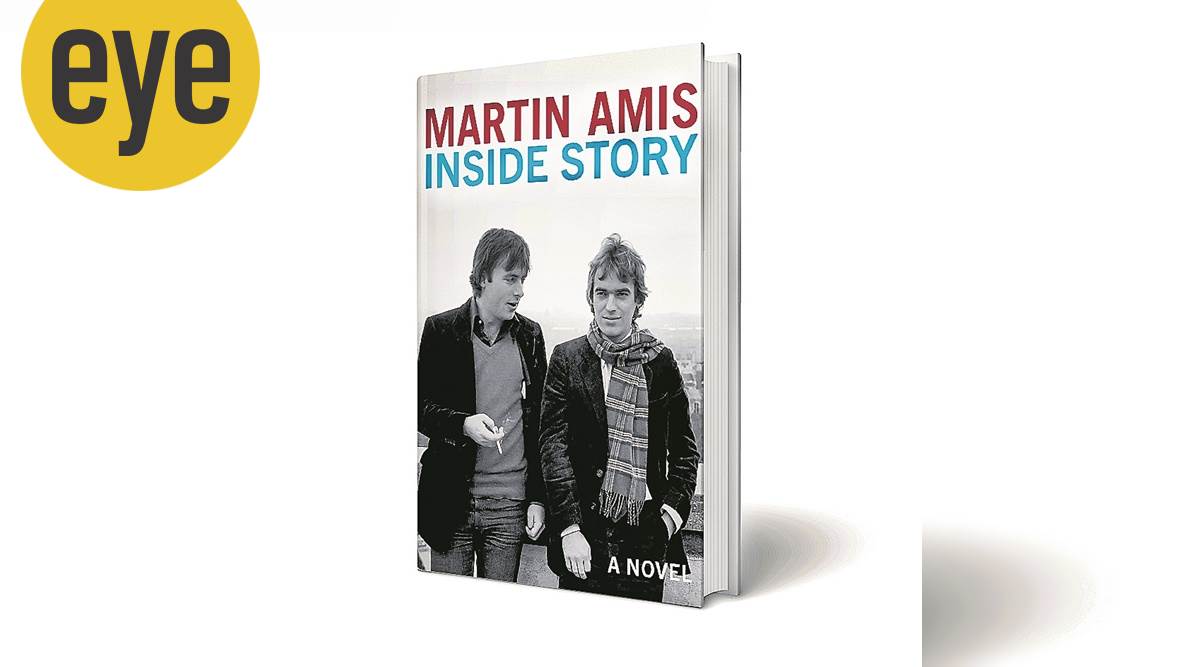 Chances are one would like Inside Story only if one agrees with the author’s perspectives on literature, and, in fact, life in general.
Chances are one would like Inside Story only if one agrees with the author’s perspectives on literature, and, in fact, life in general.By Biswadeep Ghosh
Author: Martin Amis
Publisher: Jonathan Cape
Pages: 560
Price: Rs 799
Martin Amis is 71. He is, one must add, one of the most skilled writers of the English language in the modern era. Amis’s talent for writing dazzling prose was in evidence in The Rachel Papers, with which he had made his literary debut in 1973. It was even better represented by the works that followed, among them Money (1984), London Fields (1989) and the Booker nominee that failed to win the prize, the brilliant Time’s Arrow (1991).
Inside Story, the British author’s latest, is his final “long” novel, and, it is also the most ambitious work of his literary career. The world is a repository of limitless knowledge. Amis has explored its innermost spaces for decades, finding literary treasures and discovering his heroes. Some of the most enlightening parts of Inside Story, an autobiographical novel, is the outcome of this journey.
The book is the story of a life — the author’s life. Here is a man whose father was Sir Kingsley Amis, one of the accomplished novelists of our times. Not only that, his stepmother was Elizabeth Jane Howard, another renowned author. Among those he has known from close quarters are Philip Larkin, Salman Rushdie, and, of course, his best friend Christopher Hitchens, with whom he shared a close bond until the latter died of cancer in 2011. The cover photograph of the two friends together is a tribute to their relationship, whose depiction gives rise to some of the most readable moments in the book.
Inside Story has one Phoebe Phelps, who comes across as the fictional character in the novelised autobiography. Phoebe is an attractive Catholic businessperson a young Amis in his 20s was fascinated with. The two of them shared a strange relationship in which Phoebe called the shots. Their relationship lasted between 1976 and 1981. The lady would make a return to his life several years later. At times, the Phoebe-Amis relationship seems half-heartedly written, a major reason why the book fails to engage us in its entirety.
Reading Inside Story presents a serious intellectual challenge. Unabashedly self-indulgent, Amis says, “Ideally, I’d like Inside Story to be read in fitful bursts, with plenty of skipping and doubling back — and, of course, frequent breaks and breathers. My heart goes out to those poor dabs, the professionals (editors and reviewers), who’ll have to read the whole thing straight through, and against the clock.” The book is not an easy read, with references sprinkled liberally across its pages, demanding occasional breaks to investigate their origin and connotations in the broader context.
Chances are one would like Inside Story only if one agrees with the author’s perspectives on literature, and, in fact, life in general. On one occasion, he notes: “The first serious life-writer — come to think of it — was someone Saul (Bellow) and I always argued about (Saul having the higher opinion of him): David Herbert Lawrence (1885-1930). DHL started it and he started much else.” Amis makes no effort to disguise or soften his arguments and prejudices, an approach which will have its share of critics as well as admirers.
Inside Story could have been much more absorbing had Amis not packed an entire gamut of subjects in the book. It talks about 9/11 and doesn’t miss out on even Donald Trump. It talks about family, male friends, women, sex, politics, society and so much more that one is made to wonder why Amis had to make it his final long novel.
But it does have several well-argued chapters, like the one titled Things Fiction Cannot Do, in the early part of the book. Here, he notes, “One thing literature can do, and has always done and will always go on doing (with no particular exertion) is conjure up characters stranger than Trump.” More such moments of crisply-written humour would have enhanced the readability of the book, which, unfortunately, is not the case.
Weaknesses notwithstanding, many dedicated followers of Amis will enjoy Inside Story. The book’s splendid prose is one of the obvious reasons. It does have genuinely poignant moments such as those in which he reflects on death. But it won’t impress everybody, which includes those who were convinced he was a genius after the applause for Money in 1984.
(Biswadeep Ghosh is a freelance journalist, author and teacher)